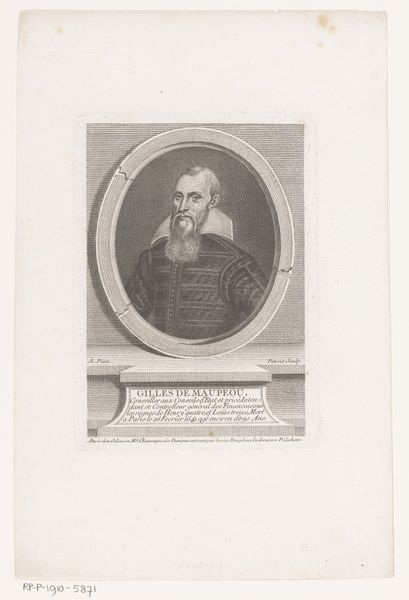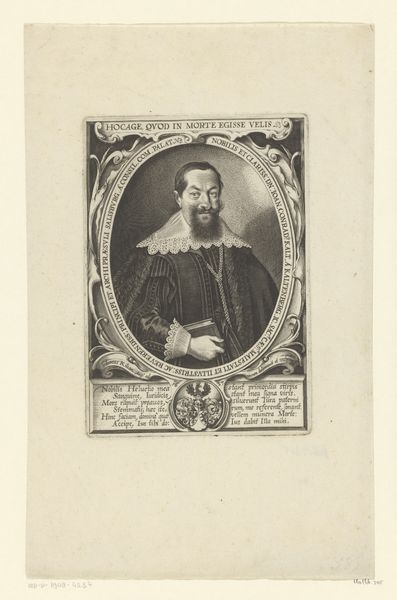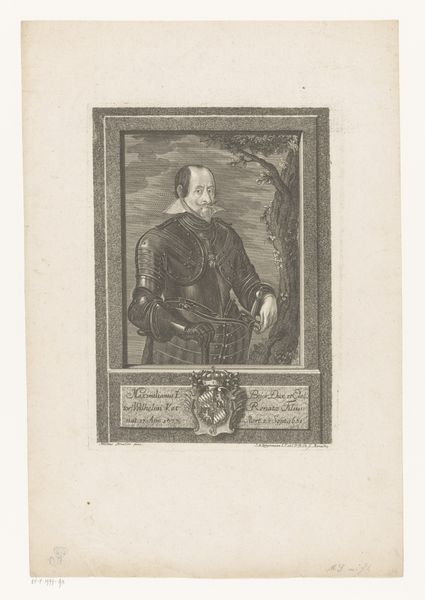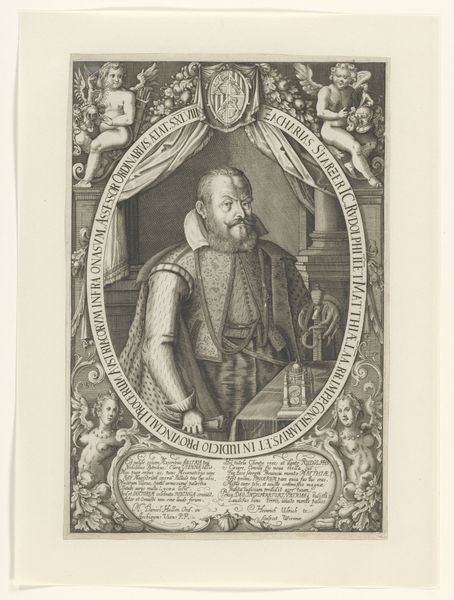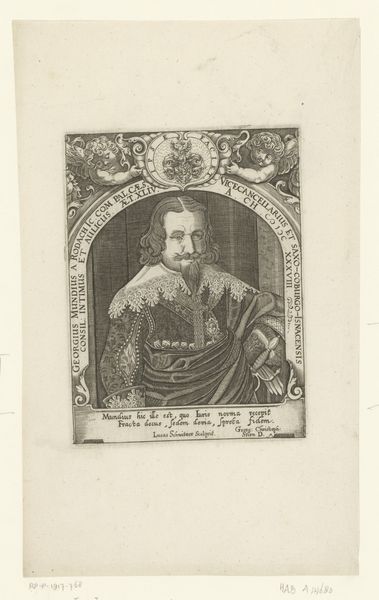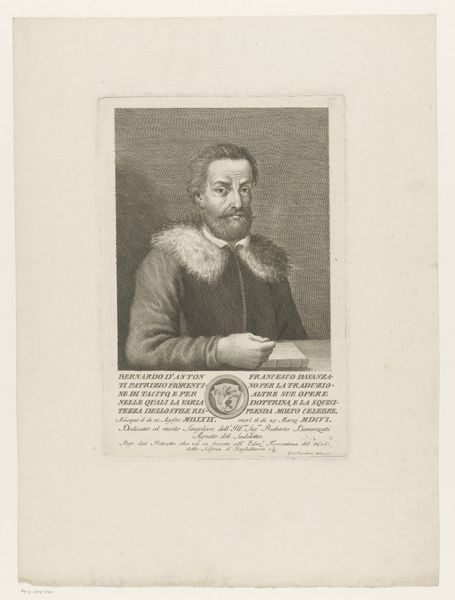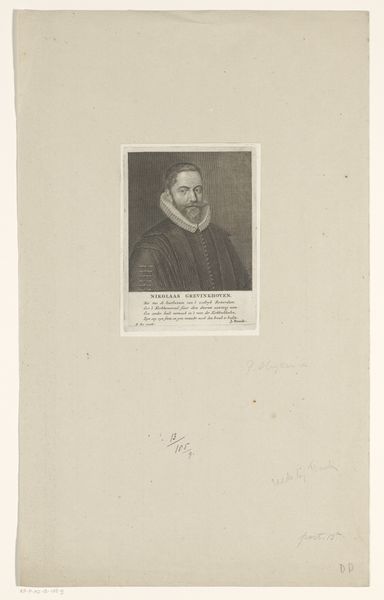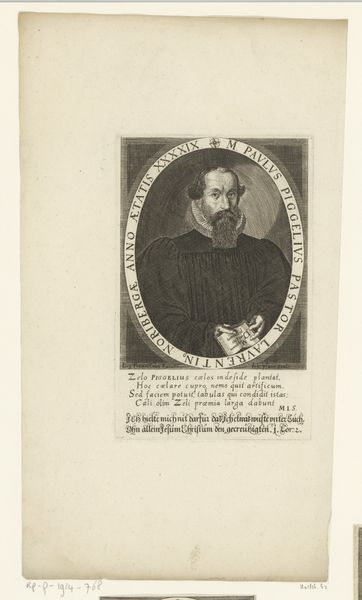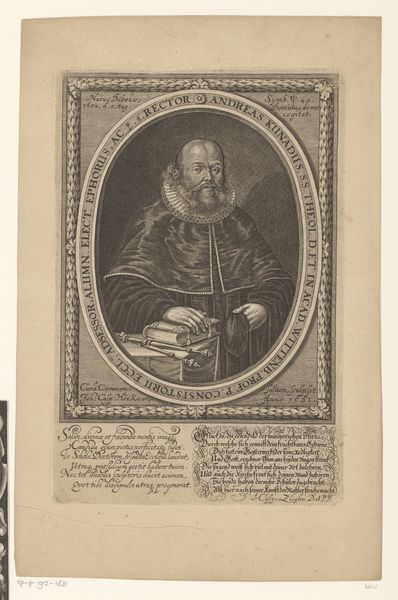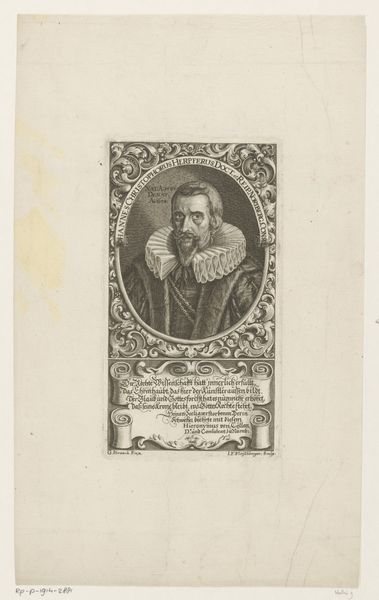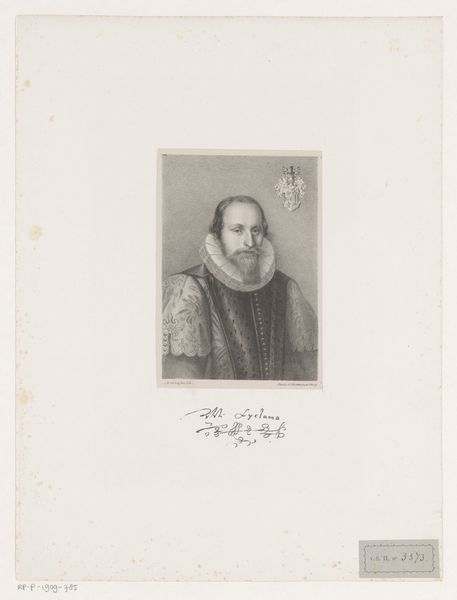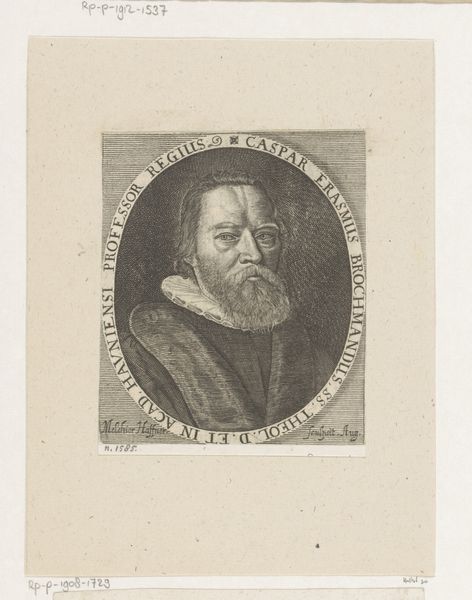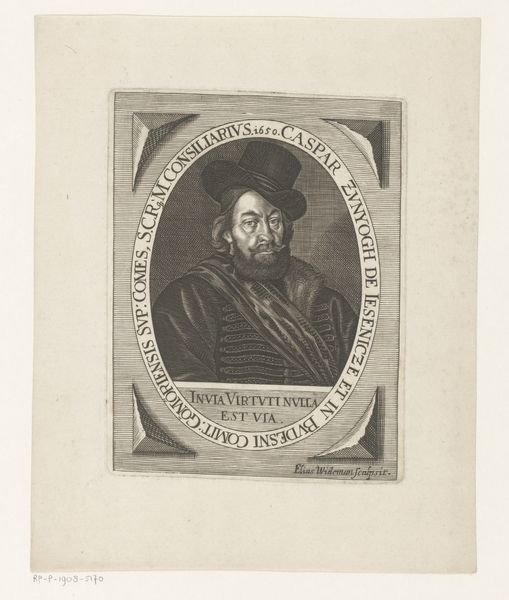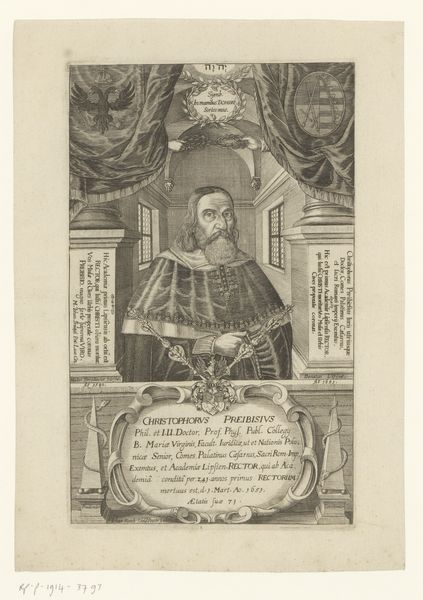
Dimensions: height 262 mm, width 175 mm
Copyright: Rijks Museum: Open Domain
Editor: This is a portrait of Albrecht V van Beieren, a 1773 engraving by Joseph Anton Zimmermann. It looks like an official, stately image, doesn’t it? There’s even a coat of arms below the portrait. How do you read the symbolic language in a piece like this? Curator: It's a very compelling question! Consider the symbolic weight of portraiture itself during this period. Beyond likeness, what does Albrecht V *represent*? His attire, the fur, the lace – these aren't just about wealth; they communicate power, authority, and lineage. The coat of arms is key – it grounds him within a specific historical narrative. What feelings does that stir in you? Editor: I suppose it gives a sense of established importance, that this is a person who comes from somewhere and means something politically. It feels different from portraits meant to capture someone's soul. Curator: Exactly! This image is carefully constructed to evoke that sense of historical gravity. Zimmermann uses line and texture masterfully – even the hatching feels deliberate, reinforcing Albrecht’s firm stance. And ask yourself: How does knowing it’s an engraving, a *reproduction*, affect its meaning? What cultural message does *that* send? Editor: I never thought about that! Since it's an engraving, that means it's reproducible and thus aimed at circulating Albrecht's image and message wider. Like propaganda, perhaps? Curator: Indeed! The ability to disseminate an image democratizes its power, which holds psychological implications, doesn’t it? Think of it as the 18th-century equivalent of a profile picture—a carefully constructed identity for public consumption. Editor: That’s fascinating; it's more complex than just a face. Thanks, that really helps to see it from a completely new perspective.
Comments
No comments
Be the first to comment and join the conversation on the ultimate creative platform.
